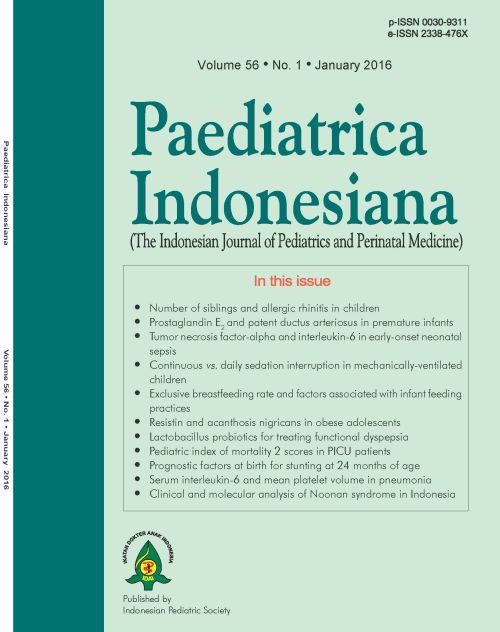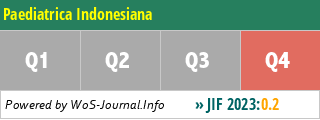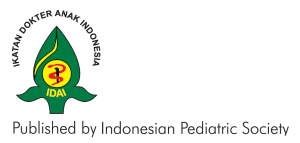Clinical and molecular analysis of Noonan syndrome in Indonesia: a case report
DOI:
https://doi.org/10.14238/pi56.1.2016.62-6Abstract
Noonan syndrome (NS; OMIM#163950) is a relatively common autosomal dominant disorder with a worldwide prevalence of approximately 1:1,000 to 1:2,500. The syndrome is characterized by distinctive facial features, congenital heart defects (CHD), and short stature. Distinctive facial features consist of a broad and high forehead, hypertelorism, downslanting palpebral fissures, a high arched palate, low set and posteriorly rotated ears with a thick helix, and a short neck with excess nuchal skin and low posterior hairline. Additional relatively frequent features include chest deformities, cryptorchidism in males, mild intellectual disability, and bleeding diathesis.1,2
In 2001, missense mutations in
Downloads
Published
How to Cite
Issue
Section
License
Authors who publish with this journal agree to the following terms:
Authors retain copyright and grant the journal right of first publication with the work simultaneously licensed under a Creative Commons Attribution License that allows others to share the work with an acknowledgement of the work's authorship and initial publication in this journal.
Authors are able to enter into separate, additional contractual arrangements for the non-exclusive distribution of the journal's published version of the work (e.g., post it to an institutional repository or publish it in a book), with an acknowledgement of its initial publication in this journal.
Accepted 2016-04-01
Published 2016-05-12














